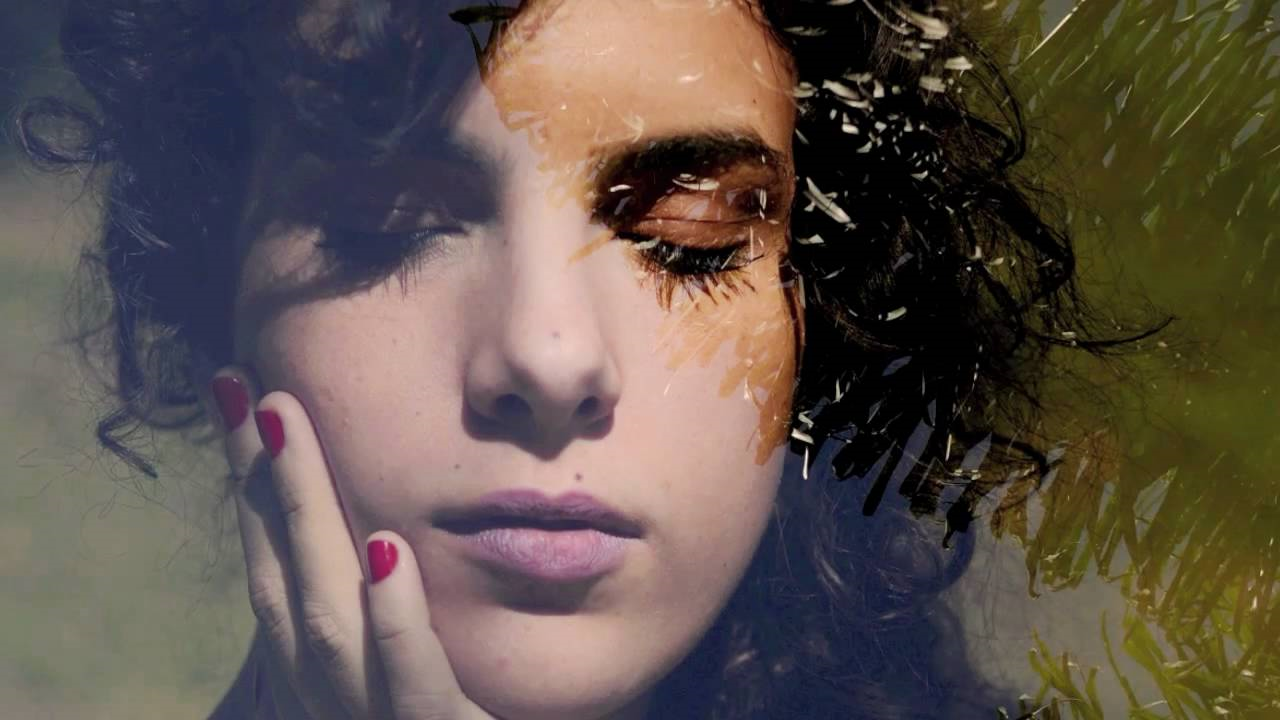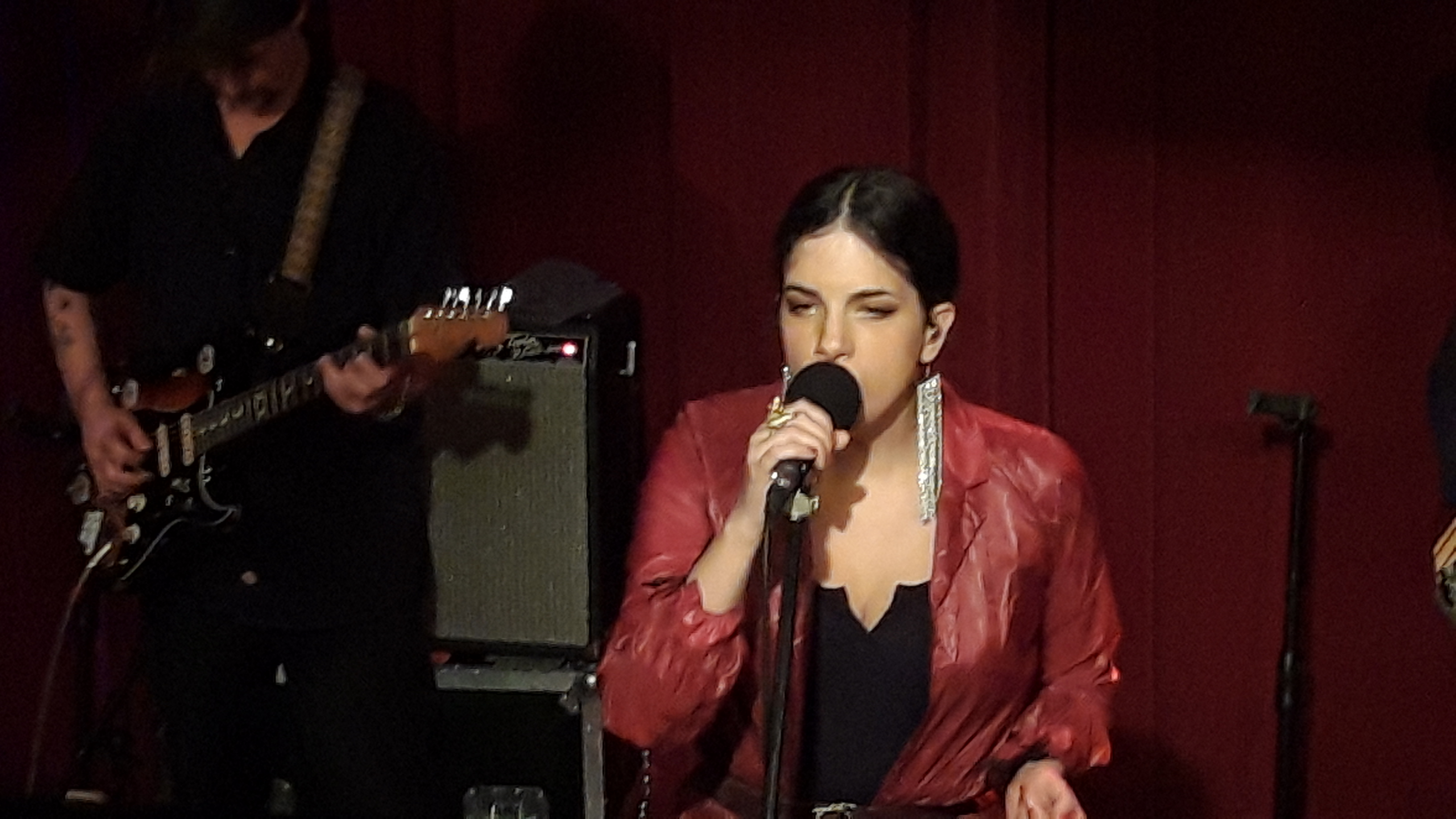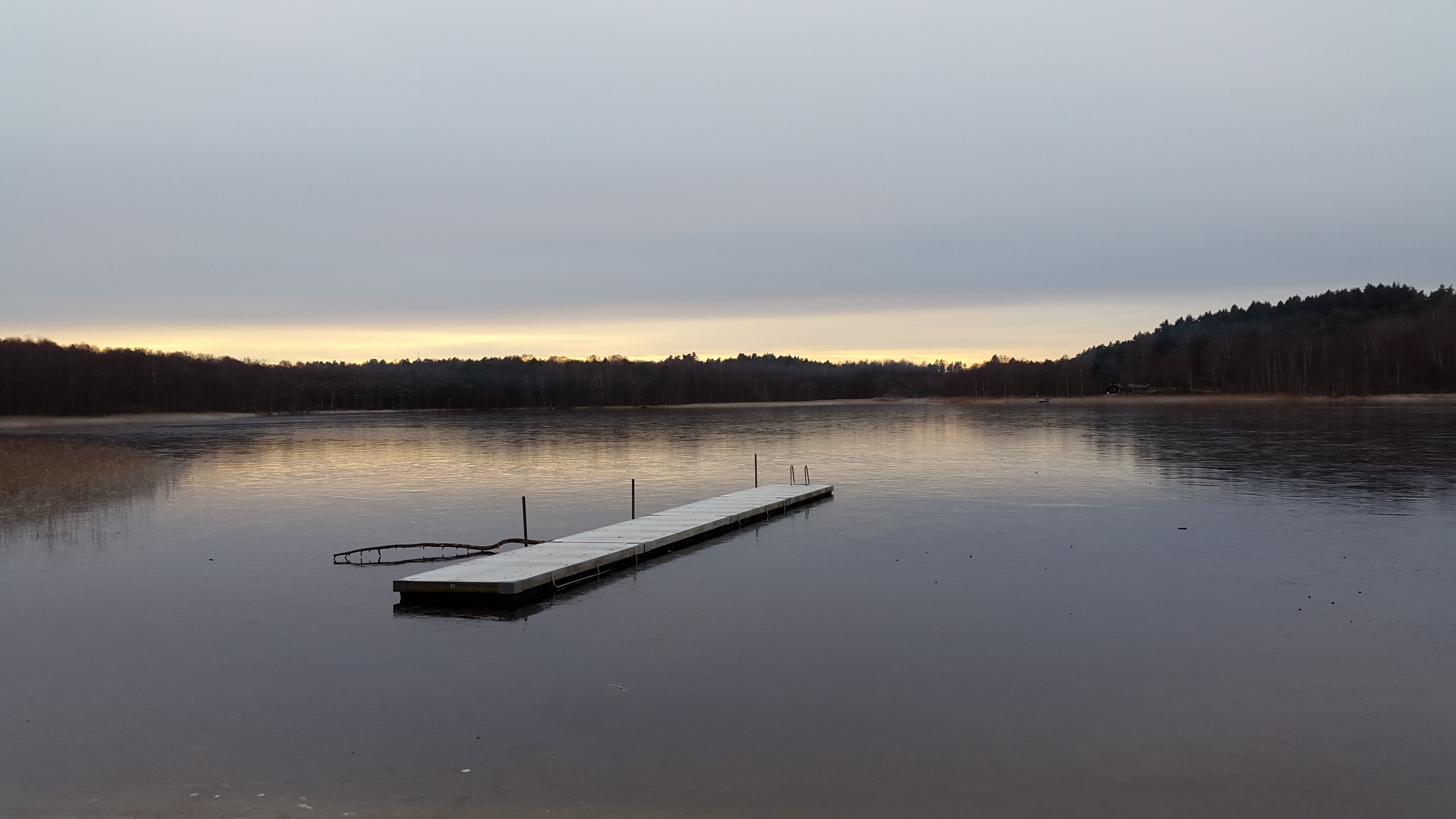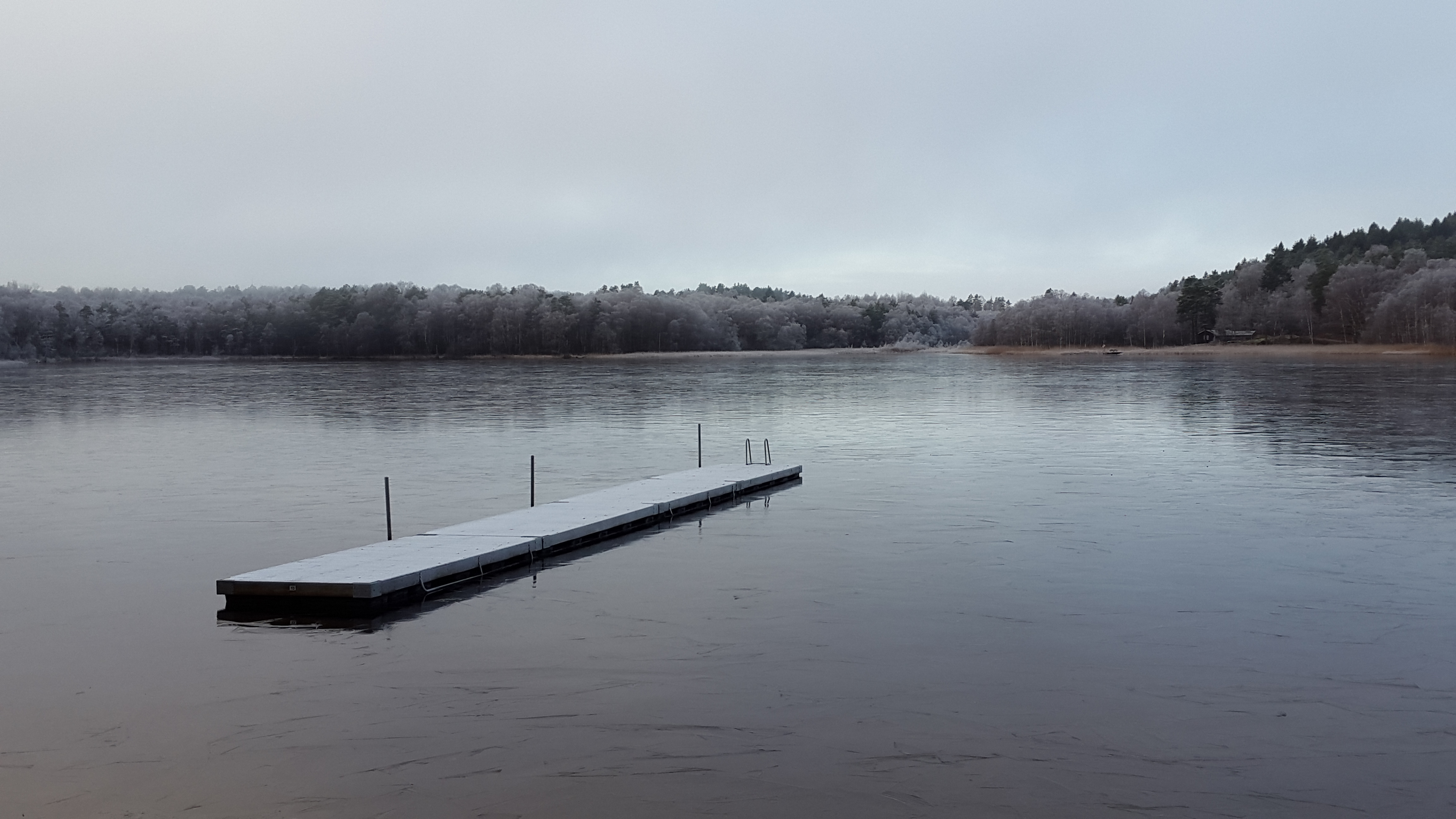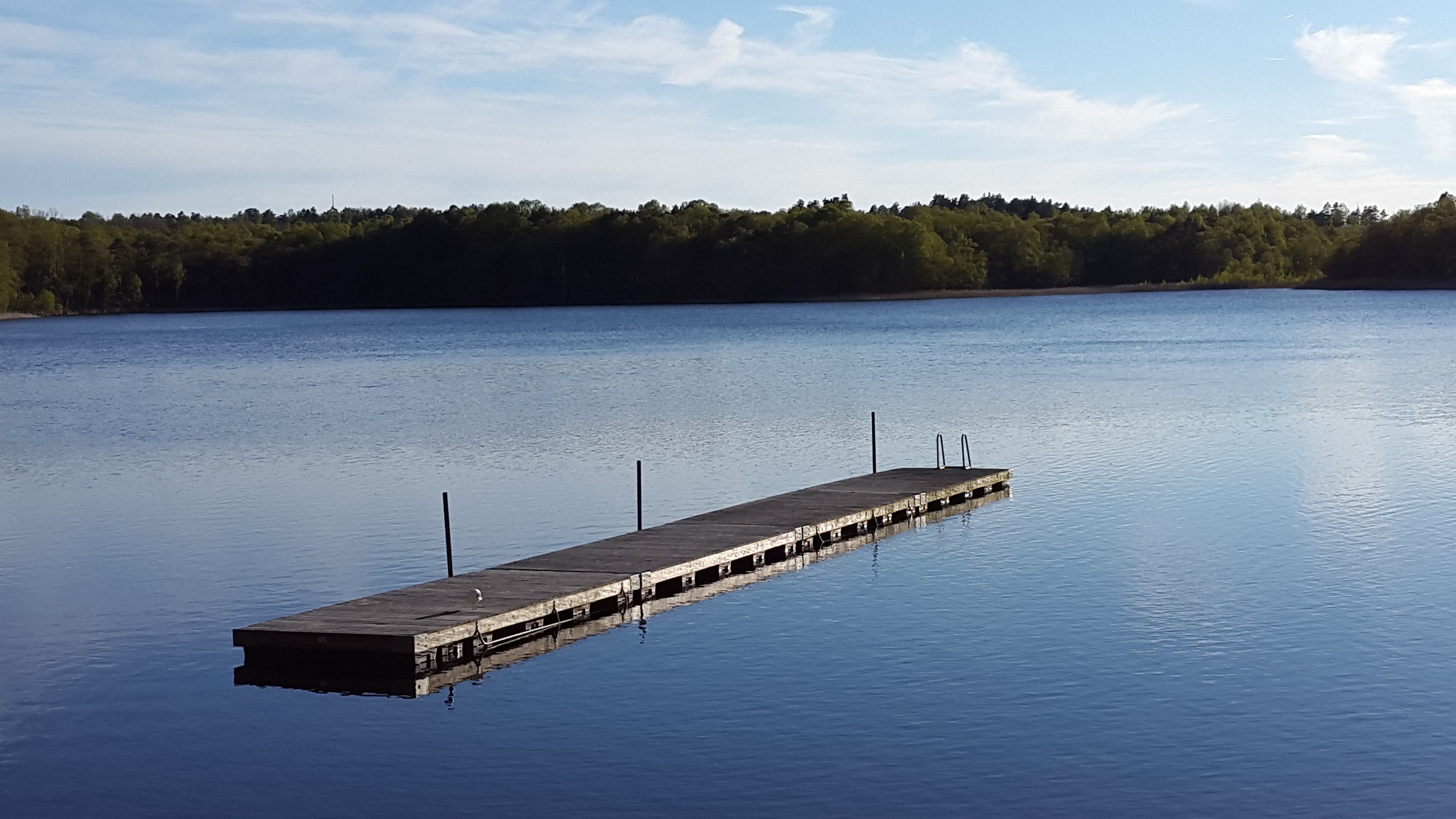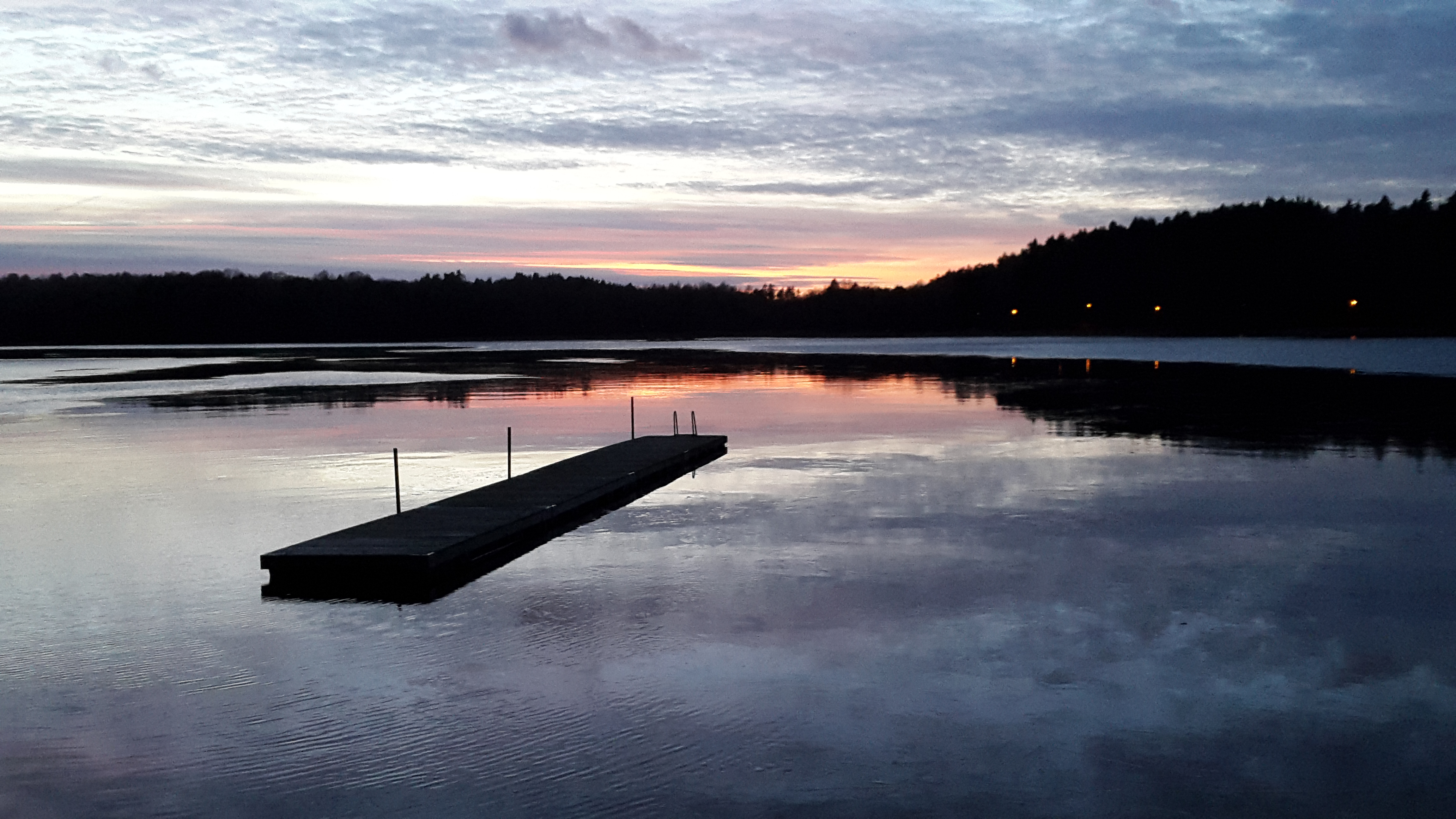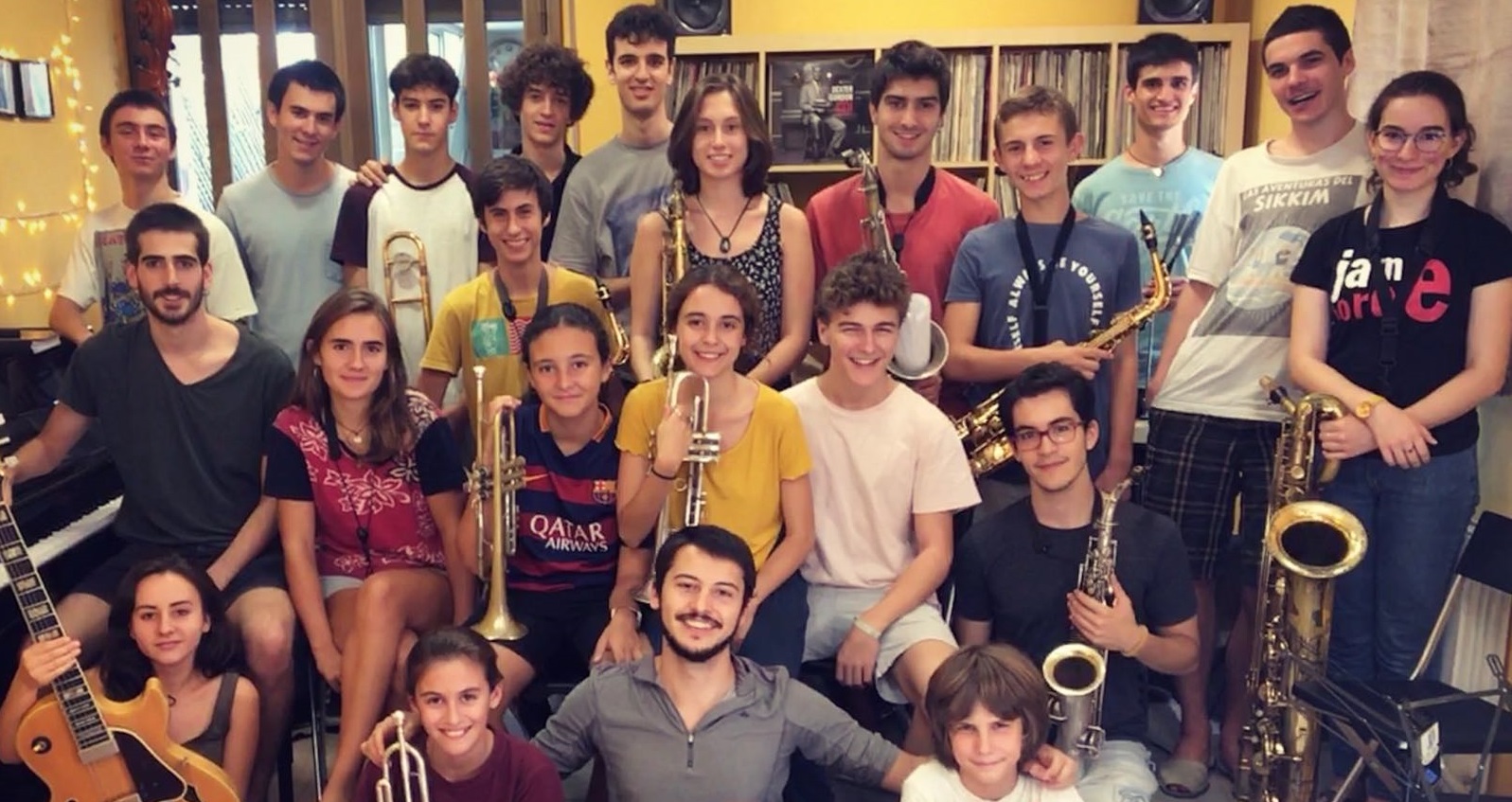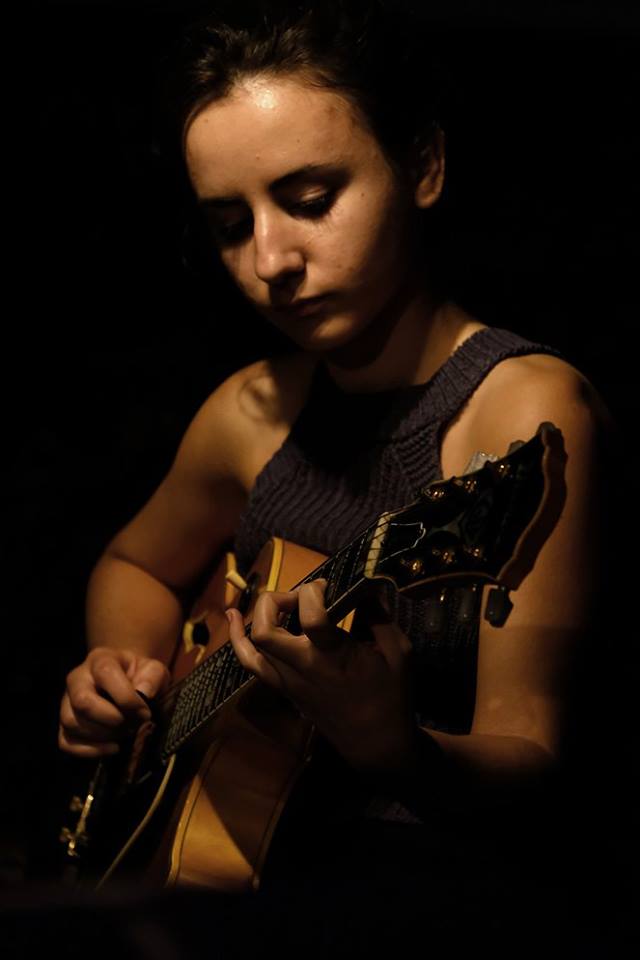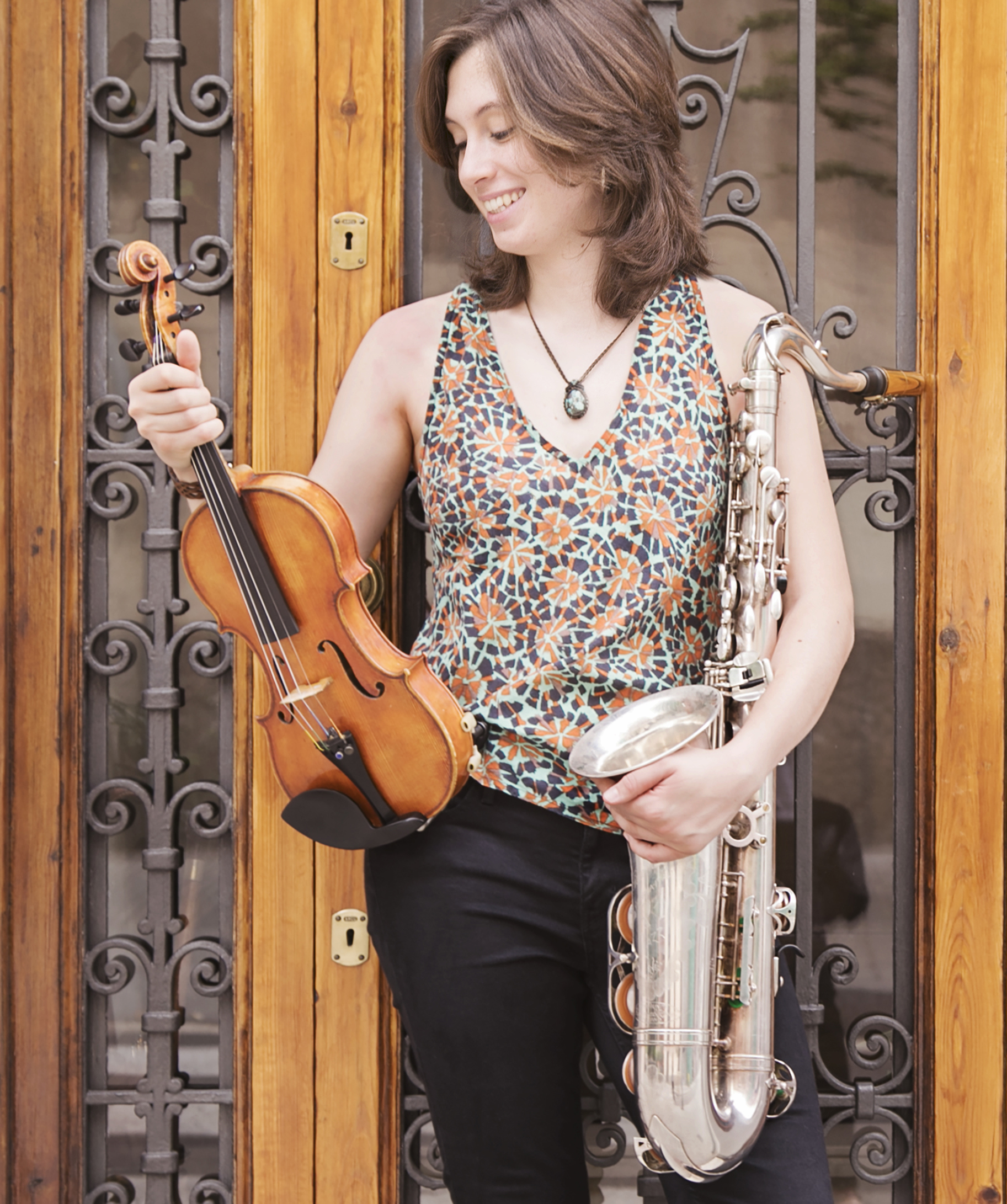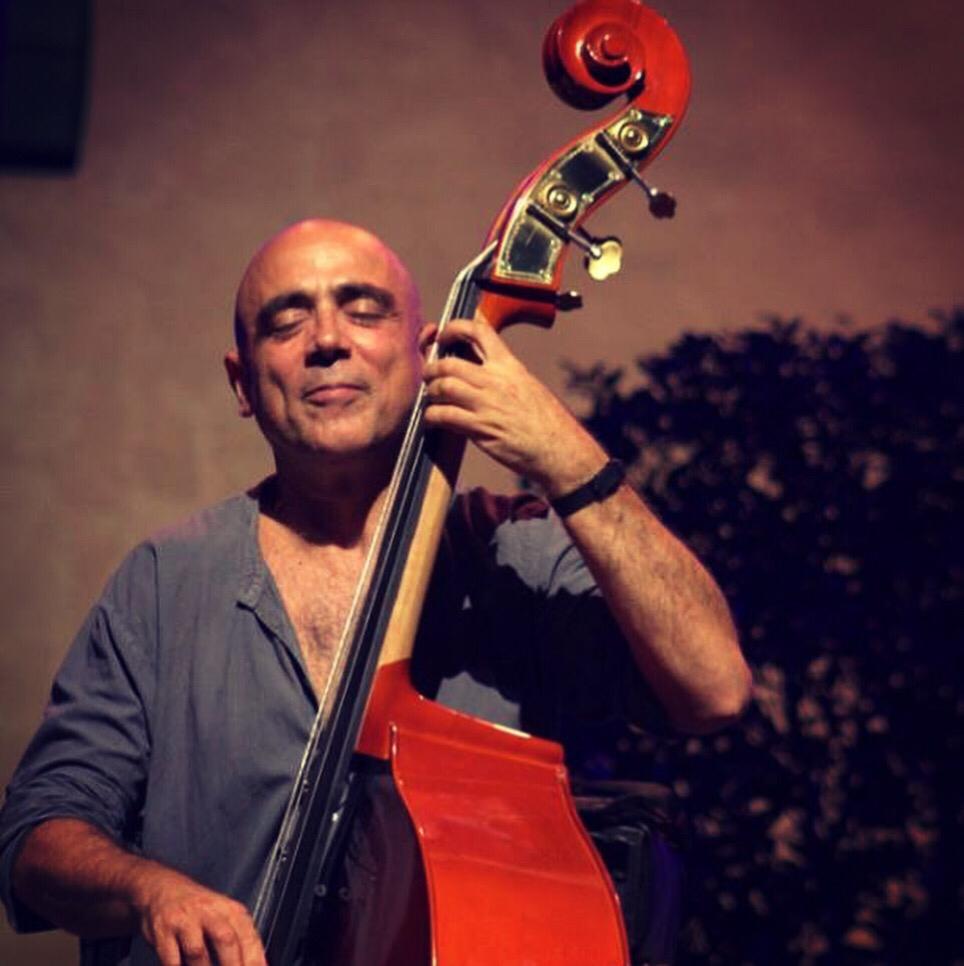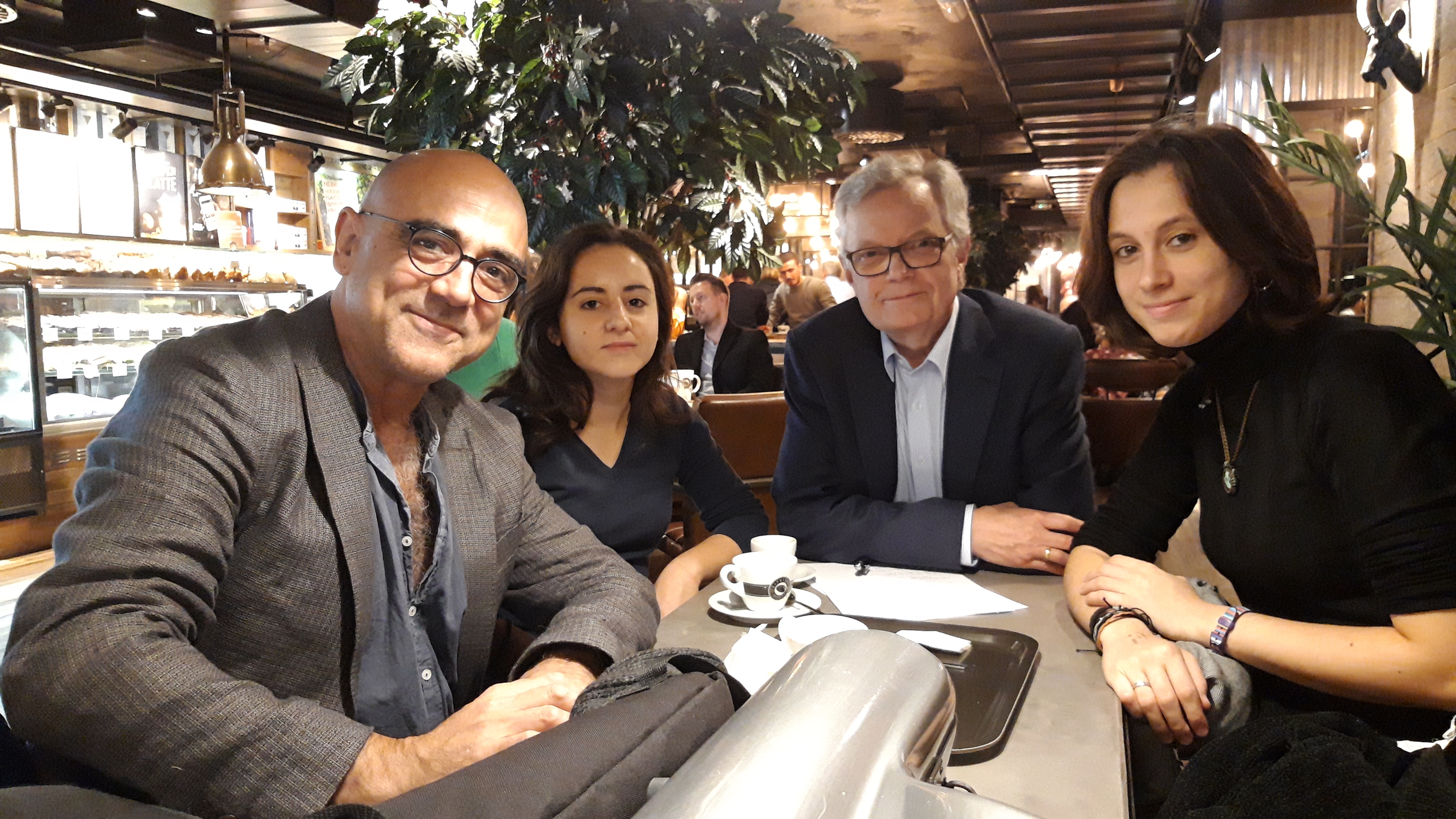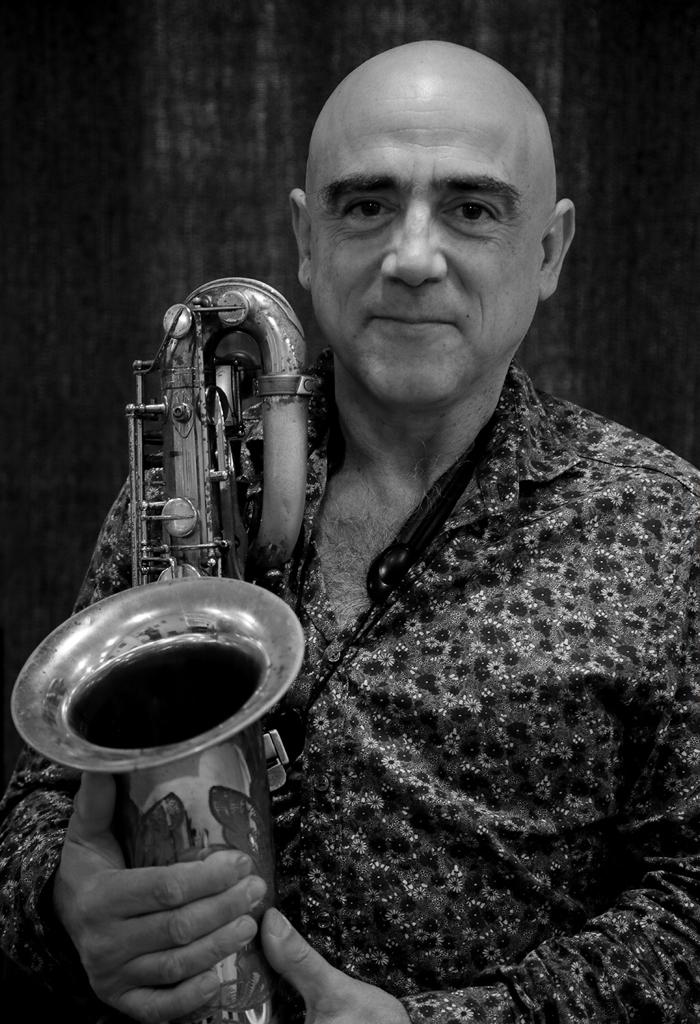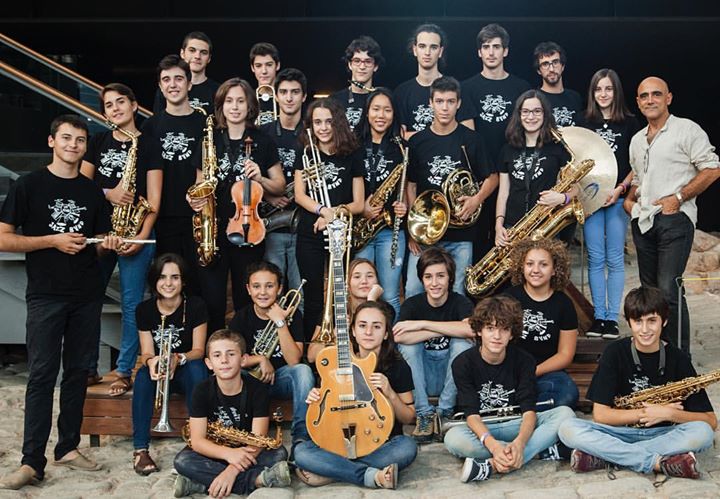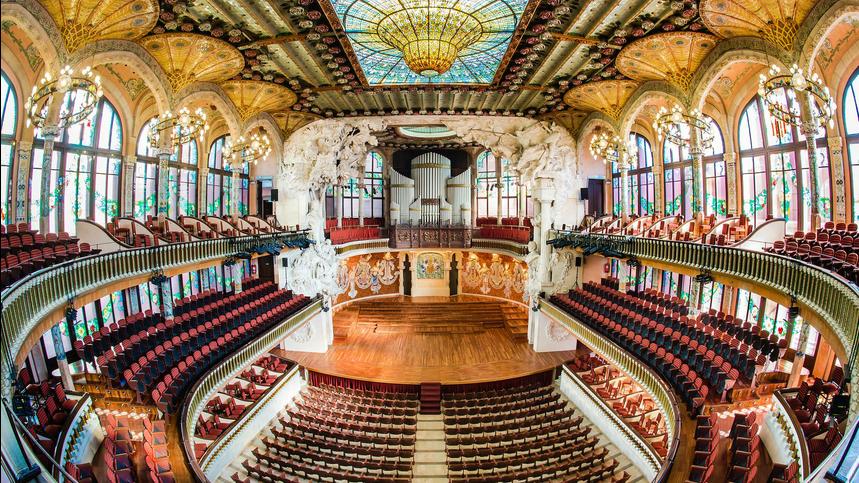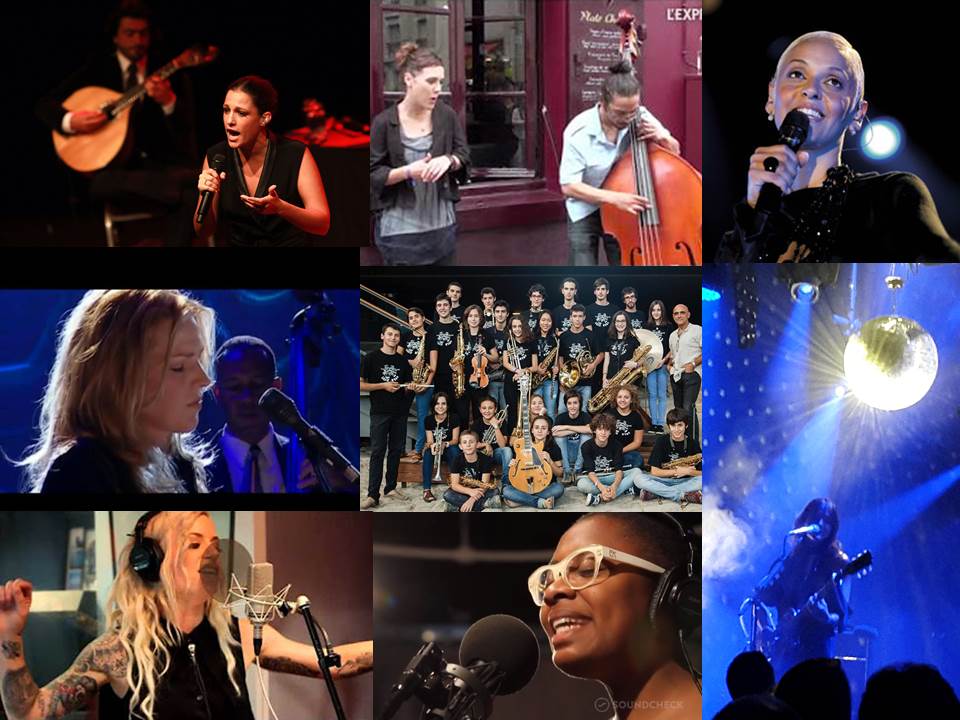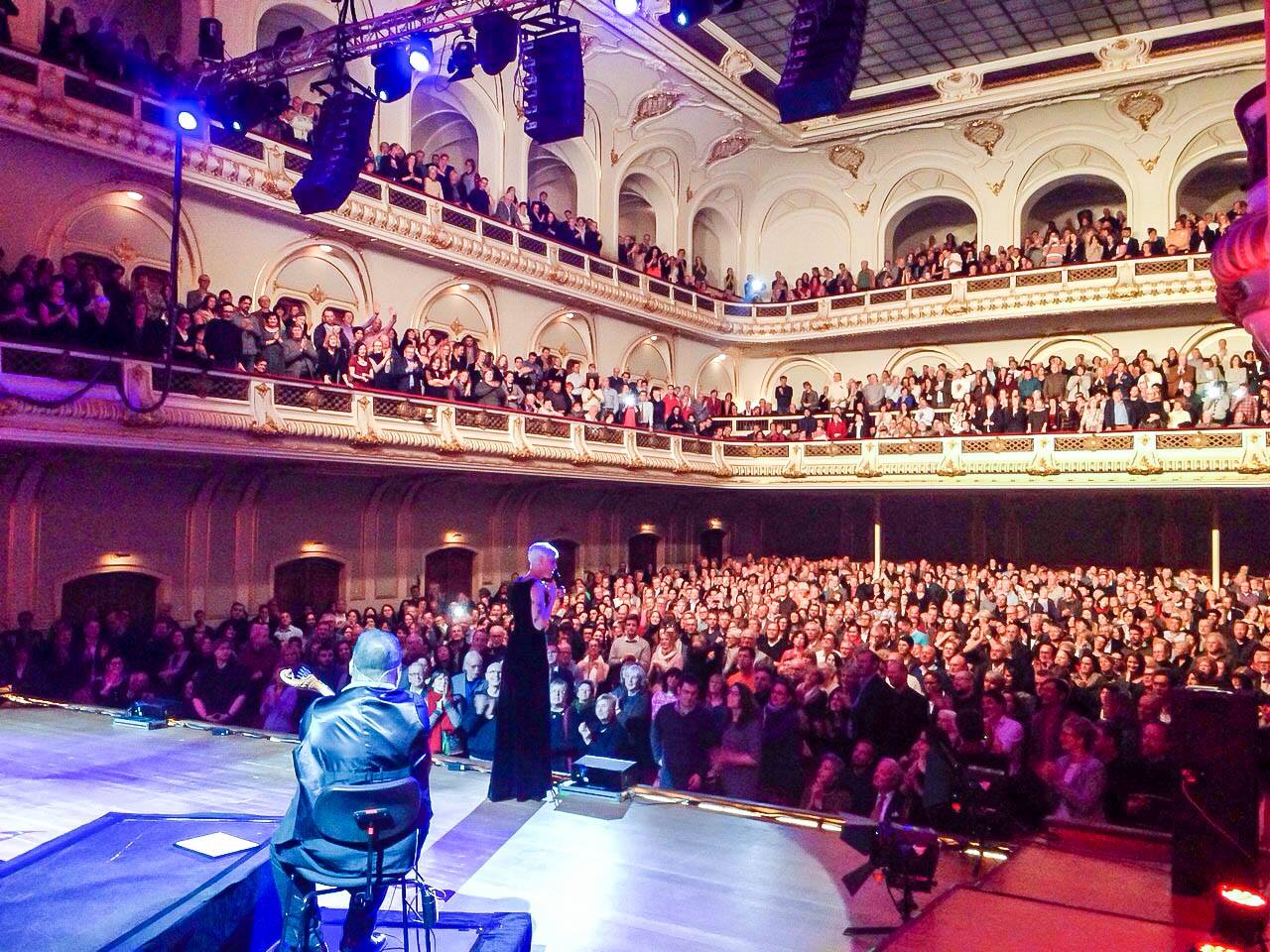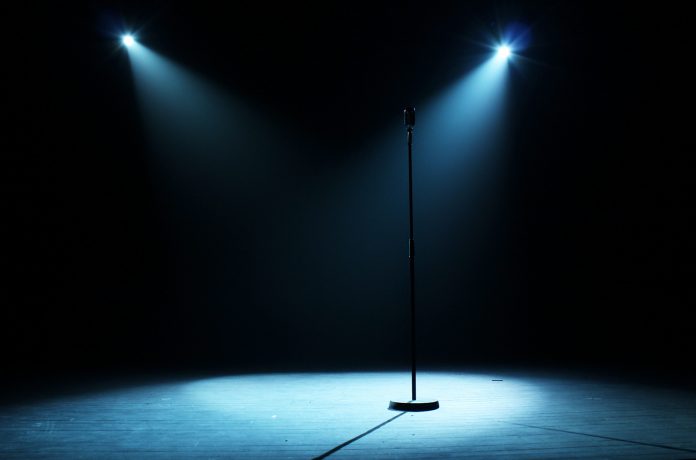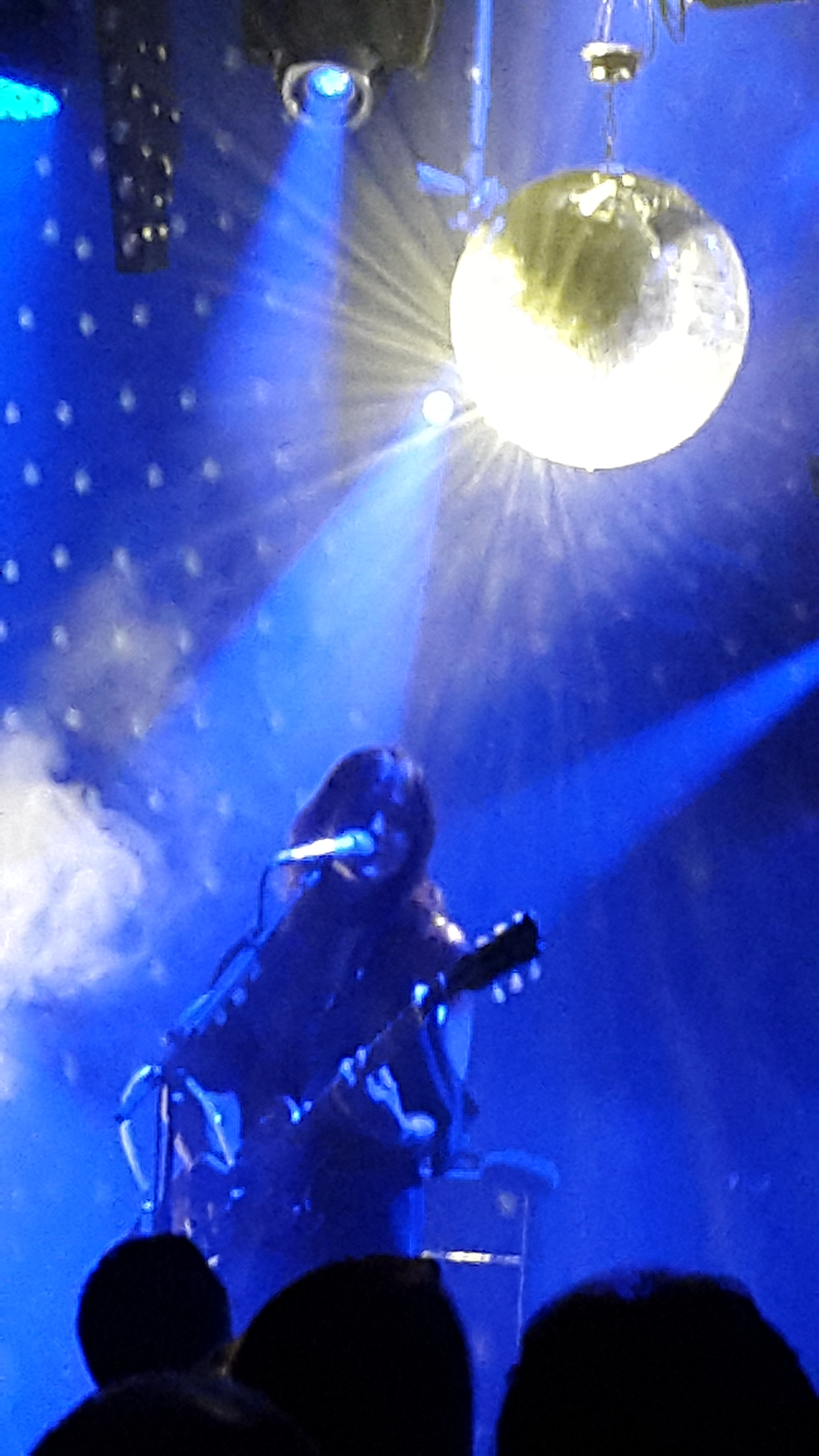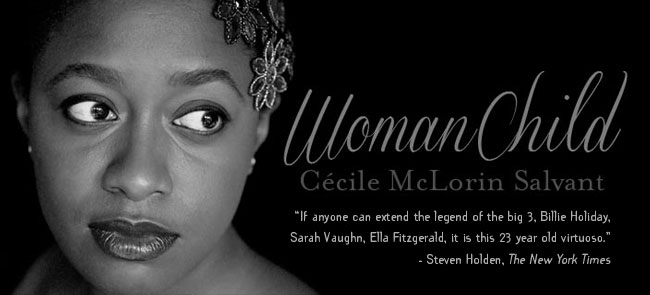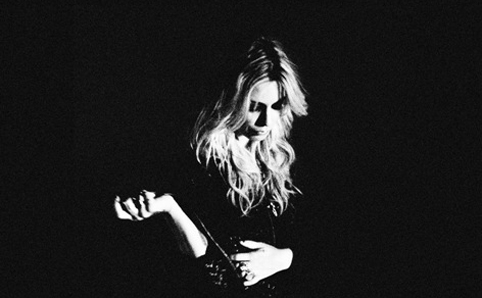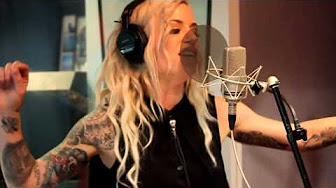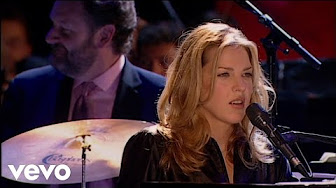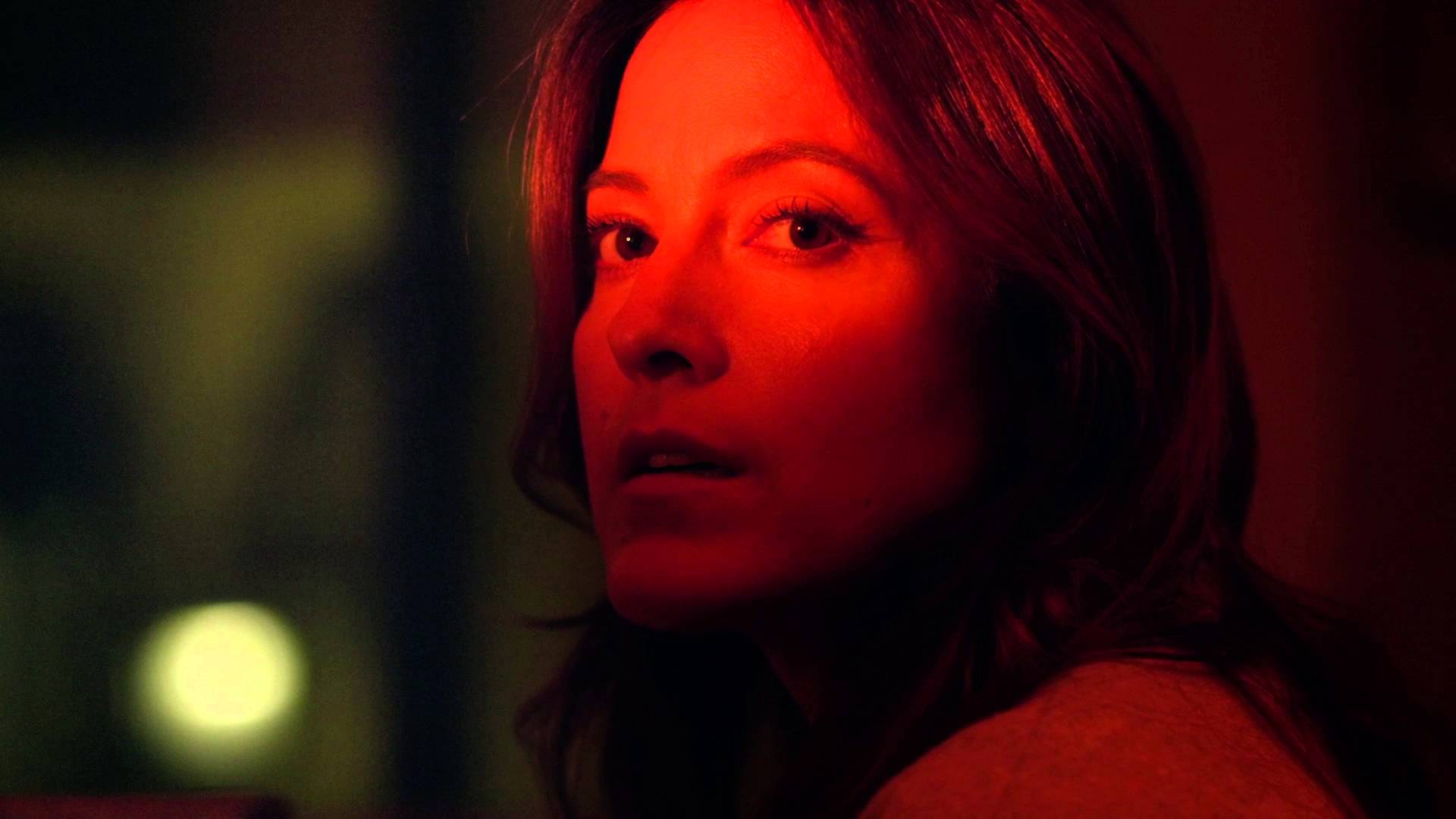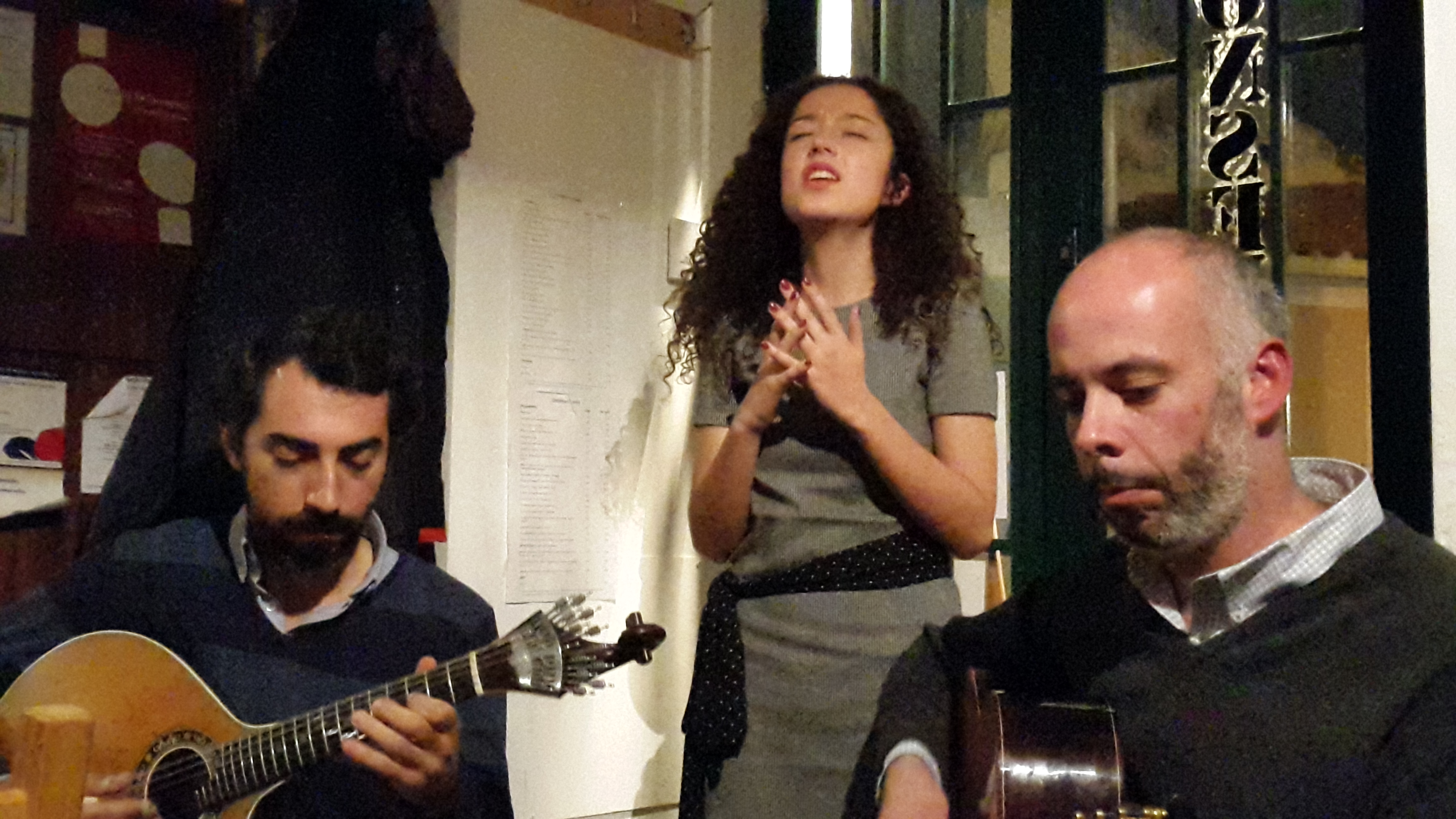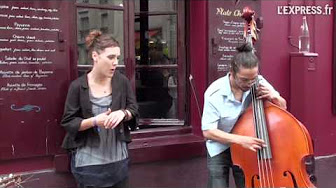
Concert at Palau de la Música Catalana November 28, 2018
This is an add-on to the post The Sant Andreu Jazz Band Formula from October 26, 2018. If you have not read that post, I recommend you to do that first and then return to this add-on.
I finished the October post with the assumption that I would not be able to resist the temptation to go to Barcelona to enjoy the Sant Andreu Jazz Band concert at Palau de la Música Catalana. I was right. The day before the concert my wife and I arrived in Barcelona with the necessary concert tickets in our luggage. We had decided to expand an already planned trip to Paris with a couple of extra days in Barcelona. For climate reasons we nowadays always travel by train, so we arrived at Barcelona Sants in the centre of the lovely city.
Palau de la Música Catalana is a very special concert building. To be able to experience the full beauty of the building you should see it in daylight. Therefore we joined a guided tour in the morning and returned for the concert in the evening.
The concert was part of the Barcelona International Jazz Festival, which celebrates its fiftieth anniversary this year. Over the years many of the world’s most celebrated jazz musicians have participated in the festival concerts at the Palau – Duke Ellington, Miles Davis, Ella Fitzgerald, Stan Getz, Dizzy Gillespie, Dexter Gordon, Oscar Peterson, Django Reinhardt, Sonny Rollins, Nina Simone, Sarah Vaughan and many more. In 2011 Sant Andreu Jazz Band participated at the Palau for the first time. Like in 2018 the band played together with some specially invited well-known jazz musicians. The concert in 2011 was a big success, and there are many beautiful video recordings from the concert on YouTube. And some of the scenes in Ramón Tort’s documentary Kids and Music, la Sant Andreu Jazz Band originate from that concert.
The specially invited musicians at the 2018 concert were Ignazi Terraza (piano), Andrea Motis (vocal and trumpet), Èlia Bastida (violin and tenor saxophone), Scott Hamilton (tenor saxophone), Luigi Grasso (alto saxophone), and Ray Colom (trumpet). Being a member of the Joan Chamorro Quartet (sometimes Quintet) Ignazi has played a lot together with members of the Sant Andreu Jazz Band. Colom was new to me, but Hamilton and Grasso have played a lot with the band, and you can find many beautiful music videos on YouTube showing their collaborations. Motis had been a regular member of the band, but appears nowadays as a guest. From this concert the senior band member Bastida has the same status. Specially invited to this concert were also the gospel choir Barcelona Gospel Messengers and the two dancers Clara Martínez and Paula Farran. And, of course, everything was supervised by the dynamic leader of the Sant Andreu Jazz Band, Joan Chamorro.
This is not supposed to be a review of the concert, but before I come to the intended subject of this add-on I have to declare that the two and a half hour long concert was one of the most enjoyable music evenings I have experienced. Of course I am biased since I love Sant Andreu Jazz Band, but my love emanates from the band’s musical brilliance and charm. And the invited guests of course added even more musical brilliance. All concert photos in this post are from the concert November 28, 2018.

The complexity of success factors
Now for the themes I want to discuss in this add-on. Everyone can see that the project of Sant Andreu Jazz Band is a huge success, but it might be harder to point to specific features as being more important than others to create this success. The question of critical success factors can be complex. But to those who want to educate young musicians and/or start a youth band this question is important, and of course Sant Andreu Jazz Band is very interesting as a reference point. This is the general theme of this post. I will formulate as many questions as answers, and my aim is to stimulate analysis and contemplation of possible success factors.
I have no doubt that the four features that Joan Chamorro points to in the former post are very important – listening to learn, the belief that young persons can play jazz, the importance of presence, and the positive energy of the group – but are they equally important? And might there be additional, equally important features that might be interesting to take notice of in the creation of a youth band and/or music education?
I have read statements claiming that one of Joan’s four factors need to be introduced into contemporary music education to improve it, but maybe that factor alone would not do the trick if introduced in music education? The road to success might be much more complex. Even if all four features were copied and practiced in institutional music education those institutions would still miss one crucial factor – Joan Chamorro. Obviously he is very important. He might not be the only one in the world who can build and sustain a project like Sant Andreu Jazz Band – but certainly not just anyone can do it.
And mentioning the importance of individuals we should not forget the individual young musicians in Sant Andreu Jazz Band, their skills and their readiness to contribute to the positive energy of the group. The younger learn from the older, and you are perceived as important regardless of the size of your contribution. And eventually the younger become more experienced and take on the roles of seniors and role models. They are all part of a living and sustainable music culture that goes on and creates new experiences for us to enjoy.
Cultural background
What about the cultural background of the members of the Sant Andreu Jazz Band? Is there something about the general culture of the society where the members grew up that facilitates the evolution of positive group energy and professional music culture? I am not saying that there is; just that the question of finding the important factors behind the Sant Andreu Jazz Band success is a complex one, and that some common dimension of the cultural background might be one important factor – or not. I have not investigated this question any further, but an investigation by a sociologist would be interesting. And the possible influence of cultural background might be an interesting question to reflect on if you want to create something like Sant Andreu Jazz Band in your city.
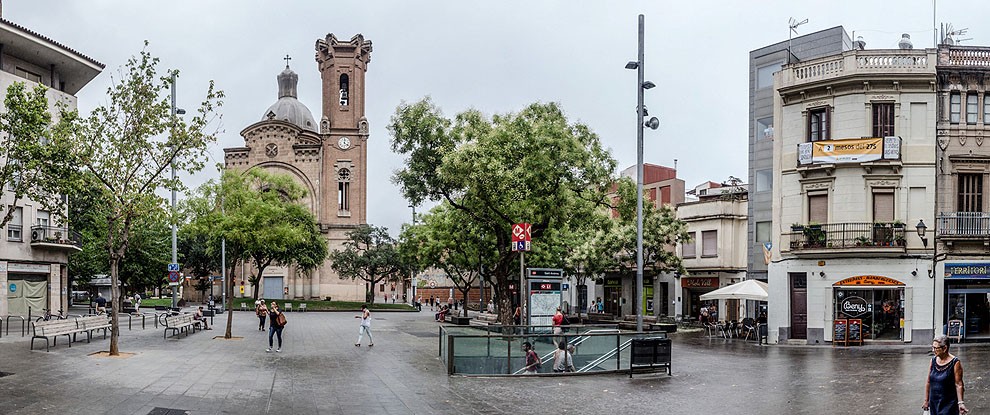
View from Sant Andreu, Barcelona
Economy
A question that touches on culture relates to finances. Joan Chamorro shared my post The Sant Andreu Jazz Band Formula on Facebook, and one of the followers asked if the students in the band had to pay tuition fees. Joan’s answer was that they did not.
This is a question that did not pop up in my mind during my interview because most education in my country is free. In other cultures the question of fees is more natural. Of course I understand that there are costs involved in running a youth band, and that they have to be paid for by someone. Joan’s answer to the question on Facebook was that the income of concerts covered the costs. But then you have to become interesting enough to make people come to your concerts and pay for the tickets. The same goes for buying your albums. Joan Chamorro and Sant Andreu Jazz Band have obviously managed to create the necessary quality and public interest in the band.
The role of money might have effects on recruitment to a youth band. If students do not have to pay fees, everyone can afford to be part of a band like the Sant Andreu Jazz Band. This means that you as a band leader can find your talents anywhere in society. You are not restrained to look for talent only with those whose parents can afford the fees. This kind of recruitment situation may also influence the internal culture of the band you form.
To be fair, I should add that most of the members of the Sant Andreu Jazz Band get musical training outside the band as they go to music schools or universities. But the training you get during section and band rehearsals (led by Joan Chamorro) is a very important part of the training. And Joan gives special classes to the saxophonists and to everyone who wants to deepen in jazz.
Independence
Sant Andreu Jazz Band in fact started from a music class in a music school, but is now an independent project run by Joan Chamorro. The start from a music school was probably necessary, but can a formal institution in the long run harbour a band like the Sant Andreu Jazz Band? There are many valuable assets in a formalized educational institution, but there are also restraints and obligations that I would guess would not be advantageous to everything that Sant Andreu Jazz Band has achieved over the years. If this is so, it might be difficult to import the features of the Sant Andreu Jazz Band formula and make it work equally well in an institution. If you still want to try, you should be aware of the frame you work within.
Richness
The Sant Andreu Jazz Band concept is a very rich concept, and I believe this richness means a lot to the success. When I say “rich” I do not mean rich in terms of money. I mean the multiplicity of different music activities. The big band itself is the base, but a number of different smaller (in terms of the number of musicians involved) projects with different band members are linked to the band. Sometimes these projects feature one or two of the band members. The big band and these smaller constellations are often combined with professional musicians. This means that the young musicians get to know, and can learn from, these professional musicians. They might play the roles of juniors and seniors, but they are all musicians in the constellation. That probably means a lot to the young musicians.

Soloists Alba Armengou and Scott Hamilton
This richness in terms of activities, projects and collaborations is of course in itself a dimension of the Sant Andreu Jazz Band success, but it probably also strengthens other dimensions of the success. The multitude of different projects, rehearsals, travels and concerts frequently provide new challenges and something to look forward to for the young musicians. These young individuals will probably have few hours of having nothing interesting to do. Rather, there is almost always something interesting, fun and challenging waiting. You are part of something that makes you happy, and together with the others in the band you make other people (like me) happy. Musicianship also provides a possibility to express oneself, a rewarding aspect of an activity for a young person.

Soloists Èlia Bastida and Scott Hamilton
Eventually the young musicians are not so young any longer, and they leave the big band. But then the small projects provide opportunities for these musicians to carry on playing with Joan, other senior band members and also the professional musicians that Joan Chamorro collaborates with. The result is a large and strong network of musicians of different ages.
Concerts and recordings
Sant Andreu Jazz Band and all the other project groups run by Joan Chamorro do a lot of concerts. There are also many albums available for current and potential fans. Even more impressive is the phenomenal releasing of music videos on YouTube. It is phenomenal both in terms of quality and in terms of quantity. This means that the fans get a lot of opportunities to experience Sant Andreu Jazz Band and the other projects. And the concerts let the band members frequently meet their audience.
The extensive releasing of YouTube videos shows an interesting policy. When new distribution channels such as YouTube emerge, traditional distributing companies can see the new phenomenon as a threat to their business. This view can be shared by the artists connected to the traditional distributing companies, not least if they earn a living through concerts. The result is that you often can find only a few official video recordings by established artists on YouTube.
But regarding concerts you can think the other way around. YouTube can be seen as a place where you can make a band well-known and liked in order to make people wanting to experience the band live. After all, a live performance is very different to a video recording. This is obviously the way it has worked out for Sant Andreu Jazz Band.
The extensive realising of videos on YouTube has also triggered the interest in the band as an educational project. This is a road I believe music education in general should go down.
Multi-instrumentalism
One feature of the band that has really struck me as impressive is the multi-instrumental approach. Many members play more than one instrument, sometimes more than two, and there are many instrumentalists who are also good singers. In the general discussion about whether you should force specialisation at an early age (in sport, music and other activities) the Sant Andreu Jazz Band model is very interesting. Maybe you as a young person sometimes will find that your second instrument was actually more suitable for you than the first one – or not. Or you just like to alternate now and then. Variation can be fun!
This is not to say that it is always better to play several instruments than to focus on one. Maybe the practices of different instruments can fertilize each other, but maybe not to focus on one instrument sometimes also comes with a cost.
However, what I find attractive with Sant Andreu Jazz Band is the possibility to play several instruments and also to sing, if you want to. And if you want to, I assume you are also encouraged. For those band members who have found combinations of several instruments (and singing) rewarding, I sincerely hope there will be such opportunities when they leave Sant Andreu Jazz Band.

Joan Chamorro and Èlia Bastida with their string instruments and saxophones
Musicianship and life
A quote from the end of the documentary Kids and Music, la Sant Andreu Jazz Band shows the double ambition of the Sant Andreu Jazz Band project: “Driven and directed by Joan Chamorro, the orchestra aims to educate children from 7 to 18 years old both as musicians and as people.” Joan has in reality stretched the age span a bit, but the double ambition is still there. And he continues to give his care even further.
I have recently watched Ramón Tort’s beautiful new documentary The Silent Trumpet, featuring the former band member Andrea Motis, and I believe I could see signs of a very fruitful nurturing culture there. In the movie Andrea tells the story of how she, her father and Joan Chamorro earlier have discussed whether to accept two tempting consecutive offers of record label contracts. It seems that they all three show a thoughtful engagement in Andrea’s future as a musician and as a person. In the discussion Andrea herself stresses the importance of being a jazz musician, not just any kind of musician. Both offers are in the end turned down, not to disturb Andrea’s development. The combination of these three persons’ serious and balanced attitude towards musicianship, life and fame indicates a posture that I believe is beneficial for a steady and long-term development.

Soloists Andrea Motis and Luigi Grasso

Soloists Alba Armengou and Andrea Motis
What to do?
Well, what should you do if you want to form a fruitful music education, a youth band, or a combination of the two? My assumption about the complexity of success factors should of course not stop you from trying to form your own concept, but it is probably wise to first reflect for a while on the issue of success factors. After doing that, your own belief has to decide your choice of action, and your own belief is probably also a positive force in itself. Maybe a well-considered selection of features from the ones that are accessible to you, supported by your own conviction and commitment, can be fruitful.
But you cannot avoid studying the Sant Andreu Jazz Band. Their example is remarkable and a great source of inspiration. Their formula is bound to incorporate a number of interesting success factors.
__________
What’s your favourite music video by Sant Andreu Jazz Band?
I know that Sant Andreu Jazz Band has a lot of fans around the world, and some of the fans also read my posts. This is my fifth post on Sant Andreu Jazz Band and connecting constellations. I usually end my posts with links to music videos on YouTube, but this time I thought you might want to contribute. Please send me a YouTube link to your favourite music video by Sant Andreu Jazz Band, or other connected constellation, and I will put at least some of the ones I get in the end of this post.
Send the link by e-mail to post@musik.pm .
Related posts
Why do we love the Sant Andreu Jazz Band? (June 26, 2020)
To be sincere (May 30, 2020)
Joan Chamorro New Quartet (February 3, 2020)
Joan Chamorro (August 9, 2019)
Èlia Bastida (May 24, 2019)
Added reflections on The Sant Andreu Jazz Band formula (January 3, 2019)
The Sant Andreu Jazz Band formula (October 26, 2018)
La Màgia de la Veu & Jazz Ensemble (July 8, 2017)
Sant Andreu Jazz Band live (April 30, 2017)
Sant Andreu Jazz Band (September 22, 2016)
Here are some videos suggested by some of you. You can still suggest more videos!
Wave
Someone To Watch Over Me
Flor de Lis
Triste
Minor Swing
Embraceable You
Laugh, Clown, Laugh
Groove Merchant
How High the Moon
Easter Parade
Black and Tan Fantasy
Andrea Motis and Joan Chamorro Grup in Concert
Georgia on My Mind
After You’ve Gone
Mood Indigo
Louisiana Fairy Tale
That’s All
Pra Machucar Meu Coração
Saudades da Guanabara
Lover Come Back to Me
When I Fall In Love
What’s New
On the Sunny Side of the Steet
